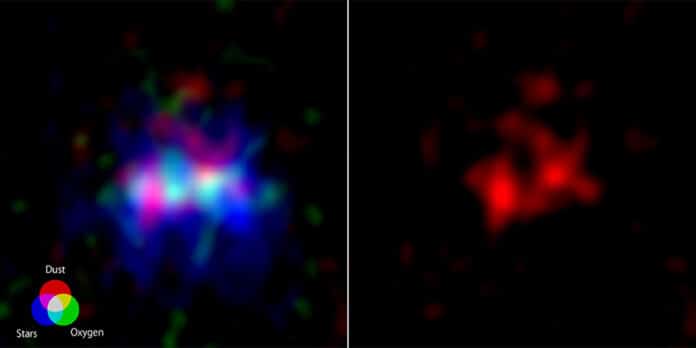A team led by Yoichi Tamura, an astronomer at Nagoya University, attempted high-resolution observations of a galaxy 13.2 billion light-years away. Named MACS0416_Y1, the galaxy lies in the constellation Eridanus.
New observations of the galaxy using the Atacama Large Millimeter/submillimeter Array (ALMA) have distinguished the sites of star formation and a possible site of star death from the surrounding nebula. The findings indicated that the oxygen emission zones and dust signal regions are tightly entwined and avoid each other. This suggests that the newly generated stars within the nebulae are ionizing the surrounding gas.
In the dust-dominated regions, the researchers also discovered a massive cavity that spans around 1,000 light-years. When several young, massive, and short-lived stars are formed, the successive supernova explosions produce giant “superbubbles” in the nebulae. It’s possible that the newly found cavity is such a superbubble.
Takuya Hashimoto from the University of Tsukuba describes the observation performance as follows: “It corresponds to capturing the extremely weak light emitted by two fireflies located 3 centimeters apart on the summit of Mount Fuji as seen from Tokyo, and being able to distinguish between those two fireflies.”
Team leader Tamura explains the prospects based on these results, “In the future, more detailed information can be obtained by conducting high-resolution observations of these star clusters themselves, using instruments such as the James Webb Space Telescope and the planned Extremely Large Telescopes.”
Journal Reference:
- Yoichi Tamura et al. “The 300 pc Resolution Imaging of a z = 8.31 Galaxy: Turbulent Ionized Gas and Potential Stellar Feedback 600 Million Years after the Big Bang” in the Astrophysical Journal. DOI 10.3847/1538-4357/acd637
